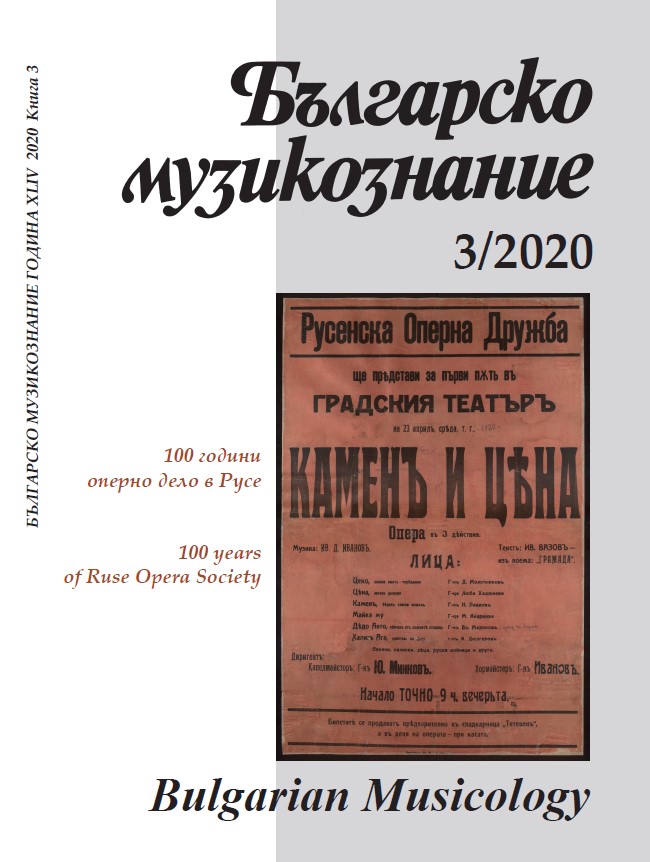Историята на Оперната дружба в Русе и влиянието на европейското оперно изкуство
The history of Ruse Opera Society and the influence of European operatic brilliance
Author(s): Veselina AntonovaSubject(s): Fine Arts / Performing Arts, Music, History of Art
Published by: Институт за изследване на изкуствата, Българска академия на науките
Summary/Abstract: The paper traces out the strong and simulative influences of West European operatic brilliance on the art life of Ruse, the largest Bulgarian city on the Danube, as early as the 1870s. The citizens were given the opportunity to enjoy the singing of soloists from the Wiener Hofoper, of the famous Russian choir led by Dmitry Agrenew-Slaviansky, performances of Enrico Masini‘s Italian opera company, etc. Bulgarian students studying abroad, the staff of the foreign consulates and their families, agents of Western European companies, etc., also brought in contemporary cultural models. The first attempt to found an opera society in Ruse was made in 1906. The second attempt of 1914 also failed and only after the end of WW1, in April 1919, Bulgarian opera Kamen and Tsena by Ventseslav Kautsky and Ivan Ivanov was put on. Ruse Opera Society staged Takhir Beg’s Wife by Dimiter Hadjigeorgiev and took to Mascagni’s Cavalleria Rusticana, but the young opera enthusiasts had to give up due to lack of funding. In 1935, Gergana by Maestro Georgi Atanassov was performed and in 1949, Ruse Opera House was formed.
Journal: Българско музикознание
- Issue Year: 2020
- Issue No: 3
- Page Range: 46-68
- Page Count: 23
- Language: Bulgarian
- Content File-PDF

